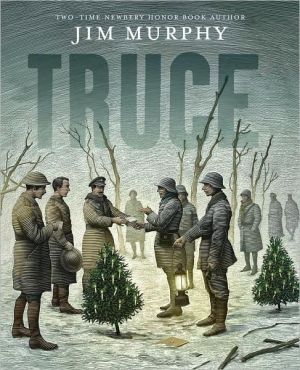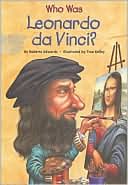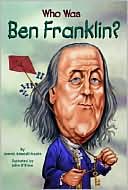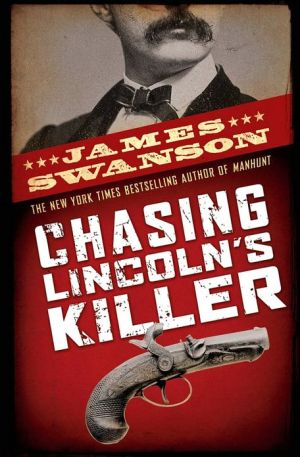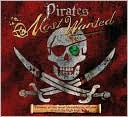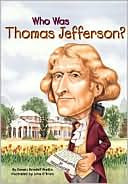Truce
Two-time Newbery Honor Book author Jim Murphy writes a stunning nonfiction masterpiece about a Christmas miracle on the Western Front during World War I.\ On July 29th 1914, the world’s peace was shattered as the artillery of the Austria-Hungary Empire began shelling the troops of the country to its south. What followed was like a row of falling dominoes as one European country after another rushed into war. Soon most of Europe was fighting in this calamitous war that could have been avoided....
Search in google:
On July 29th 1914, the world’s peace was shattered as the artillery of the Austria-Hungary Empire began shelling the troops of the country to its south. What followed was like a row of falling dominoes as one European country after another rushed into war. Soon most of Europe was fighting in this calamitous war that could have been avoided. This was, of course, the First World War. But who could have guessed that on December 25 the troops would openly defy their commanding officers by stopping the fighting and having a spontaneous celebration of Christmas with their "enemies"? (cont'd) In what can only be described as a Christmas Miracle, this beautiful and heartrending narrative will remind everyone how brotherhood and love for one another reaches far beyond war and politics.The Washington Post - Abby McGanney NolanDespite its grim details (including a few photographs of carnage), this is a fitting holiday book
\ Abby McGanney NolanDespite its grim details (including a few photographs of carnage), this is a fitting holiday book\ —The Washington Post\ \ \ \ \ Publishers WeeklyMurphy's (A Savage Road to Thunder) account of the causes and first months of WWI offers a poignant and sometimes graphic introduction to the “war to end all wars.” While a few of the sepia-toned photos and artwork portray haunting imagery (including one of dead bodies in a trench), the six-chapter narrative doesn't bog down in gloom and hopelessness. Instead, its focus—the Christmas truce that occurred along Western Front trenches in 1914—leaves readers with hope in the human spirit and a sense of the folly and futility of the Great War. The grainy pictures of the truce, taken with soldiers' own cameras, show combatants standing shoulder to shoulder, often smiling or exchanging gifts. “German soldiers noticed that a wooden board was being held up by British soldiers with the words 'Merry Christmas'.... Several miles away, another board appeared on the German side that read, 'You no fight, we no fight.' ” Myriad quotations from young men on both sides (often taken from letters home) set a very personal tone. An extensive time line and additional source material wrap up this moving history lesson. Ages 9–12. (Oct.)\ \ \ Children's Literature\ - Marilyn Courtot\ The quote on the opening page by Winston Churchill really sets the stage for this book as does the opposing photograph. What would happen if armies refused to fight and insisted on finding other means to settle disputes—indeed this words would certainly be a better place, but it never seems to happen. Murphy offers enough background to understand the political situation prior to the spark that ignited World War I, particularly the hubris and fears of various leaders, and once hostilities did erupt, the feeling of superiority on each side and the belief that this war would end quickly. It of course, did not and fighting dragged on for four long years with a horrific loss of life on both sides. Yet, there are incredible stories like this one which relates the Christmas truce of 1914. The wearied men voluntarily stopped the senseless killing on one of the most important holidays in the Christian religion. Both sides sang carols, and eventually crawled out of their trenches to meet each other, exchange gifts and recognize the insanity of the war. Murphy's account is peppered with first person accounts which make the readers feel that he or she is there watching, listening and hoping for the best. The high command of course frowned on this fraternization and with great reluctance many of these soldiers were required to once again fight the fight. In his epilogue, Murphy reflects "At the very least the Christmas Truce of World War I demonstrated that the combatants were more alike than not. It may have been a small step toward peace on earth,…but it offered reassurance and hope that a kinder, humane spirit could prevail amid the horrible brutality of war." A book not to be missed andone that belongs in any library or private collection. Reviewer: Marilyn Courtot\ \ \ \ \ VOYA\ - Steven Kral\ At the end of the first year of World War I, initial hopes for a quick resolution vanished. So too had the visions of glory, honor, and renown born from wars of the previous century. After a few large, devastating battles marked more by loss of life than territory won, the War settled into an uneasy stalemate, with each side facing the other from long, deep trenches, separated by a no-man's land that neither side dared cross. On Christmas 1914, the lower-ranking soldiers on both sides defied orders and openly fraternized with their counterparts in what became known as the Christmas Truce. Period photographs, cartoons, drawings, diary entries, and maps are paired with accessible text to explain the attitudes and events that led to the War, the initial flood of excitement the War brought, the horrors of the initial casualties and bloodshed, the deadly grind of trench warfare, and the hope, quickly and quietly quashed, that the Christmas Truce brought. For the most part, this book is effective. Murphy's recounting of the initial moves of the war, while deftly using period accounts to explain what it was like to be there, can be a bit difficult to follow and suffers from a lack of maps. Overall it is very readable, presented well, accessible to middle schoolers, and should appeal to many looking for material about the beginning of the War. Reviewer: Steven Kral\ \ \ \ \ School Library JournalGr 6–10—World War I was notable for incredible carnage, the complete senselessness of which was noted by both foot soldiers and such savvy statesmen as Winston Churchill. Murphy begins this history of the Christmas truce of 1914 by limning the buildup to the war. Anyone who has ever felt confused by the connection between the assassination of Archduke Ferdinand and the conflagration that followed will be vastly enlightened by Murphy's explanation, extended in the comparison, drawn in the epilogue, of Europe in 1914 to the United States just prior to attacking Iraq. The author's descriptions of the fatal collision between 19th-century battle tactics and 20th-century weaponry leave no national high command looking the least bit competent. Given this background, it is quite clear why, in December of 1914, troops (both German/Austrian and Allied) simply ceased fighting. Soldiers fraternized across the barren No Man's Land between trenches, sang together, and exchanged gifts. In some places, the truce lasted until late into the spring. Murphy's research is impeccable, and his use of primary sources is both seamless and effective. Frequent black-and-white photographs and period drawings extend the readable text. The source notes and accurate index add to the usefulness of a volume that seems designed as much as a teaching tool as for general reading. An excellent addition to middle and high school libraries, this affecting book has a place in history curricula as well.—Ann Welton, Helen B. Stafford Elementary, Tacoma, WA\ \ \ \ \ Kirkus Reviews"Every Who / Down in Who-ville / Liked Christmas a lot . . . / But the Grinch, / Who lived just north of Who-ville, / Did NOT!"Christmas books started arriving last spring-imagine opening a box in May and finding it full of red, green, gold and sparkles. The mad rush to wring a few more bucks out of every passing Christmas is enough to set my Grinch fingers drumming. This season, we'll see two Nutcracker picture books, a couple of Night Before Christmases, a few Nativity tales and Tyrannoclaus, which marries two can't-beat-it concepts for kids-dinosaurs and acquisition (imagine that elevator pitch)-among many, many others, all rounded up in our September 15 issue. There are a few nods to "multiculturalism," with a scant handful of Hanukkah books, one lonely Kwanzaa title and a very funny anti-consumerist Solstice book, but it's clear that Christmas is the moneymaker holiday of the year, and the sheer volume of Christmas books has me plotting Grand Theft Who-hash to a Boris Karloff soundtrack: "You're a mean one . . . "But then I open a box containing Truce, by Jim Murphy (Scholastic, Oct. 1, 2009, $19.99, 9780545130493), and I think that perhaps I might sing another tune. Murphy takes his epigraph from Winston Churchill, who wondered in a November 1914 letter to his wife, "What would happen . . . if the armies suddenly and simultaneously went on strike and said some other method must be found of settling the dispute?" The "dispute," of course, was the Great War, the War to End All Wars until it became the First World War. And the truce of the book's title is that magical, spontaneous Christmas truce of 1914, when peace broke out all along the Western Front. \ Opening with a cogent recapof the state of Europe prior to the assassination of Archduke Franz Ferdinand that focuses on those moments when war might have been averted (if Kaiser Wilhelm had read his mail on time, for instance), the author gracefully moves to the horrific conditions of battle that established the static madness of trench warfare-a madness that, oddly enough, led to enough fraternization across No Man's Land that both British and German High Commands feared what eventually happened. Drawing on a wealth of primary sources, from letters home, diaries and recollections of combatants to archival photographs and prints, the author allows the principles to speak: "Altogether we had a great day with our enemies," wrote one British private, "and parted with much handshaking and mutual goodwill."That goodwill didn't last-though in one spot in the Belgian woods the truce lasted almost till Easter-and Murphy takes readers through to the exhausting endgame that spawned the next war, but also he leaves kids with the provocative thought that war need not be inevitable, that the truce "offered reassurance that a kinder, humane spirit could prevail . . . " And if that doesn't make even the Grinch-iest heart grow at least three sizes, then nothing will. Who-pudding, anyone?-Vicky Smith\ \ \
